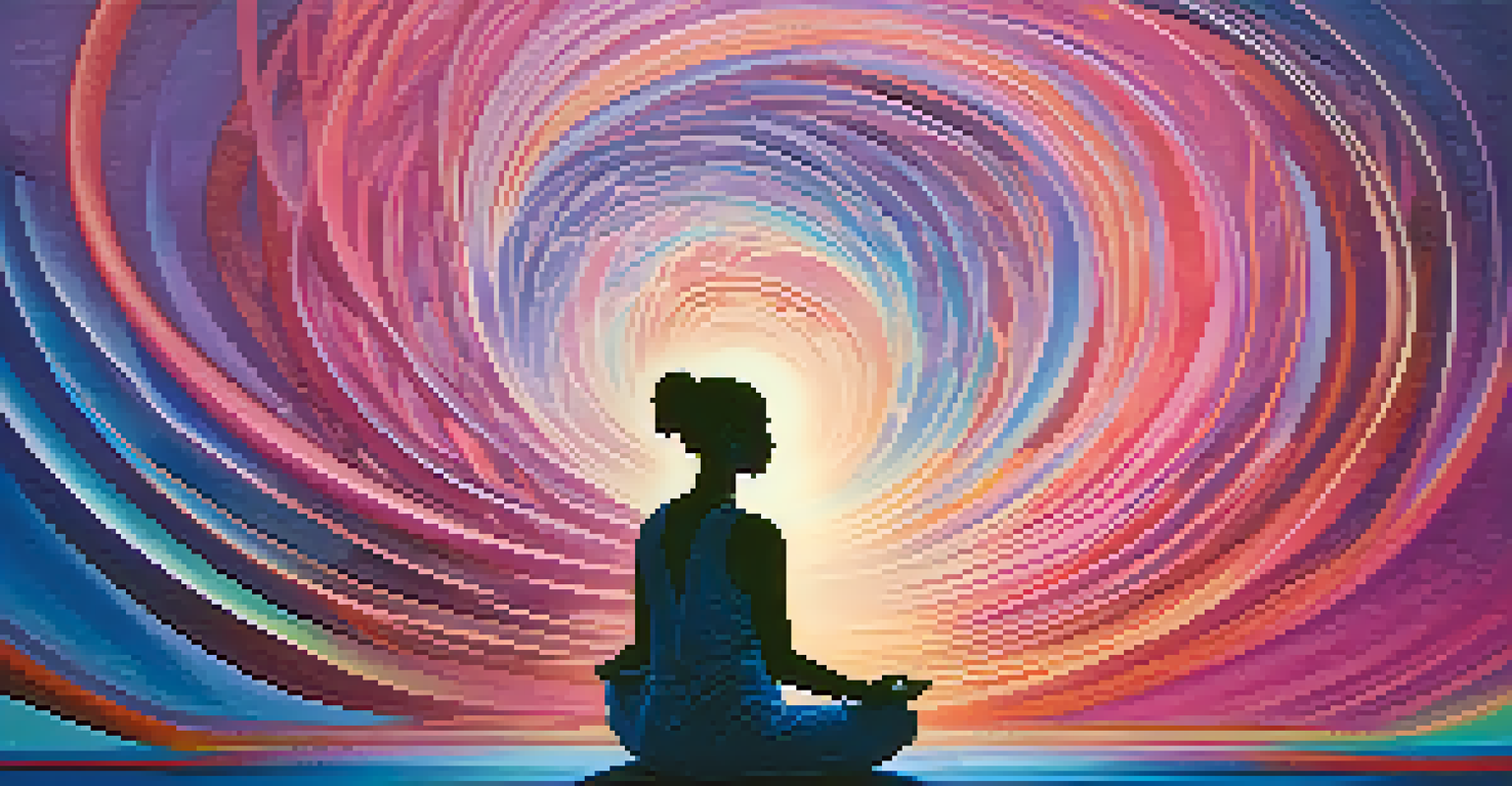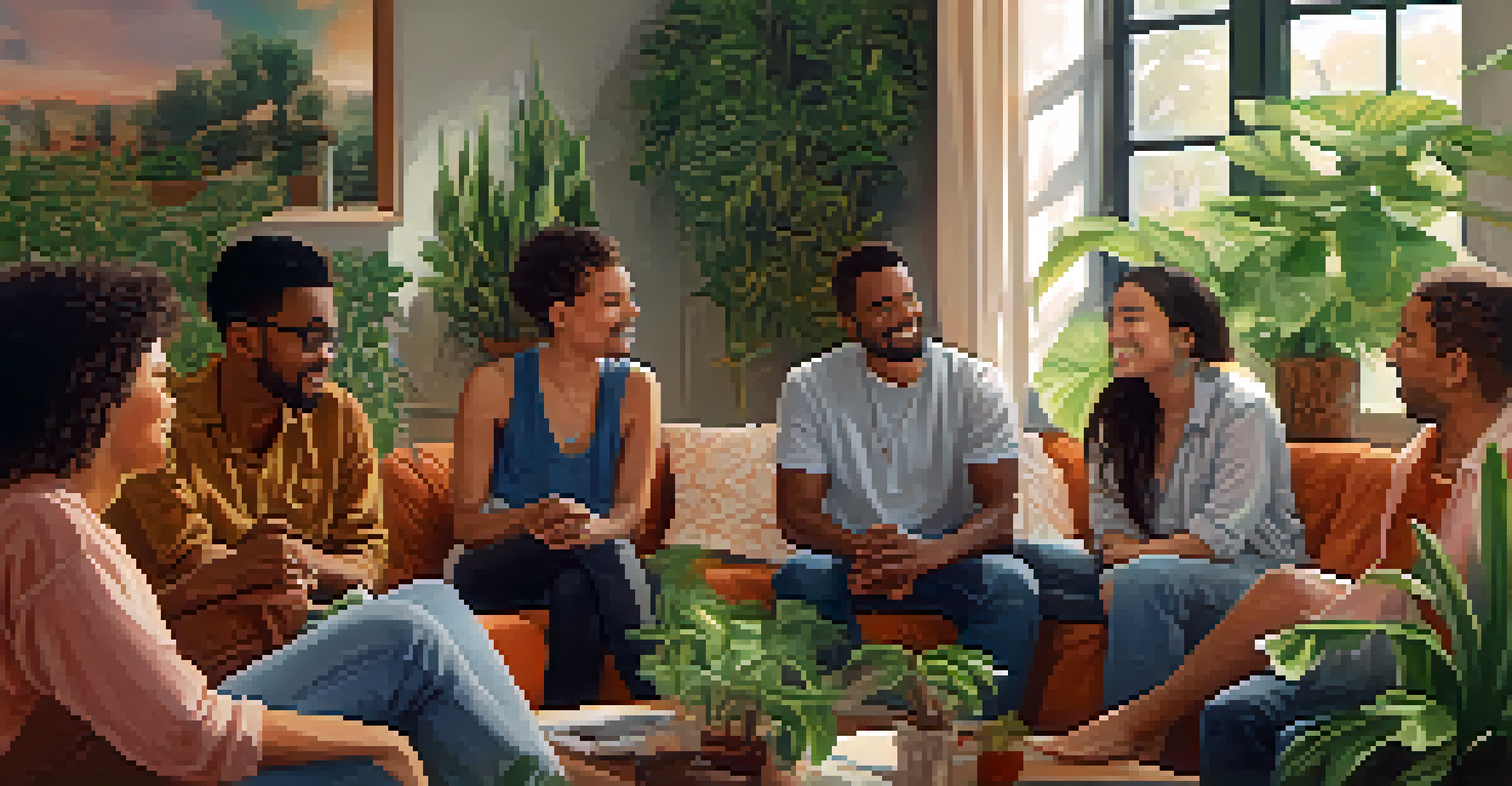Exploring Hallucinogens' Impact on Body Image Perception

Understanding Hallucinogens and Their Effects
Hallucinogens are substances that alter perception, mood, and cognitive processes. Common examples include psilocybin (found in magic mushrooms) and LSD. These substances can lead to profound experiences that may impact how individuals perceive themselves and their bodies.
The mind is everything. What you think you become.
When consumed, hallucinogens can trigger visual and auditory hallucinations, which may distort one’s sense of self. Users often report a feeling of interconnectedness with the universe, which can shift their perception of their physical form. This can lead to an exploration of body image that contrasts sharply with everyday life.
Understanding these effects is crucial, as they can create a sense of freedom from societal norms. For some, this experience may promote body positivity, while for others, it could amplify insecurities. Thus, the impact of hallucinogens on body image is complex and multifaceted.
The Psychological Effects of Hallucinogens
Hallucinogens can induce changes in thought patterns and emotional states, making individuals more introspective. This heightened self-awareness may lead to a reevaluation of personal beliefs about body image. For instance, someone who harbors negative feelings towards their appearance might experience a shift in perspective during a trip.

The psychological journey often involves confronting deep-seated insecurities, which can be both enlightening and challenging. Users may find themselves questioning societal beauty standards and their own self-worth. This introspection can serve as an emotional catalyst for change regarding how they view their bodies.
Hallucinogens Alter Body Image Perception
These substances can profoundly impact how individuals view themselves, leading to both positive and negative shifts in body image.
Moreover, the emotional release that hallucinogens can provide may help users break free from the constraints of self-criticism. By fostering a sense of acceptance, these substances can potentially lead to improved body image in some individuals, even long after the effects have worn off.
Hallucinogens and Body Dysmorphia
Body dysmorphic disorder (BDD) is a condition where individuals obsess over perceived flaws in their appearance. For those suffering from BDD, hallucinogens can elicit intense emotional responses, often magnifying their insecurities. During a trip, users might experience distorted images of themselves that align with their negative self-perception.
We do not see things as they are, we see them as we are.
Interestingly, some studies suggest that hallucinogens could help individuals confront their distorted self-image. By providing a new lens through which to view their bodies, users may begin to challenge the unrealistic standards they impose on themselves. However, this can also lead to distress if the experience reinforces negative feelings.
It's essential for users with existing body image issues to approach hallucinogens with caution. While some may find healing in the experience, others could face exacerbated feelings of inadequacy. Understanding this delicate balance is crucial for anyone considering the use of these substances.
The Role of Set and Setting in Hallucinogenic Experiences
The concept of 'set and setting' refers to the mindset of the user and the environment in which they consume hallucinogens. Both factors play a significant role in shaping the experience and the resulting impact on body image perception. A supportive and safe environment can lead to positive insights, while a negative setting may trigger anxiety and fear.
For example, an individual in a nurturing space might explore their body image and emerge with a renewed sense of self-acceptance. Conversely, someone in a chaotic or uncomfortable environment may find their insecurities amplified. Thus, preparing the right conditions is vital for a beneficial experience.
Set and Setting Influence Experiences
The user's mindset and environment play critical roles in shaping the effects of hallucinogens on body image, emphasizing the need for a supportive atmosphere.
Moreover, the user's mental state before taking hallucinogens can influence how they perceive their bodies. If someone is already struggling with self-acceptance, they might find it challenging to attain a positive body image during their trip. This highlights the importance of addressing underlying issues prior to engaging in hallucinogenic experiences.
Cultural Perspectives on Body Image and Hallucinogens
Throughout history, various cultures have utilized hallucinogens for spiritual and healing purposes. In many indigenous traditions, these substances are seen as a means to connect with the self and the universe. This cultural context can significantly influence how individuals perceive their bodies during and after the experience.
For example, in some cultures, the use of hallucinogens is associated with rituals that promote body acceptance and communal support. This contrasts sharply with modern societal pressures, which often emphasize unattainable beauty standards. Embracing the cultural significance of these substances may help individuals cultivate a healthier body image.
Cultural narratives around body image can provide valuable insights into the transformative potential of hallucinogens. By exploring these perspectives, individuals may discover new ways to appreciate their bodies, free from the constraints imposed by contemporary society.
The Science Behind Hallucinogens and Body Image
Recent research has begun to uncover the neurological effects of hallucinogens on the brain. These substances can alter brain connectivity, leading to changes in self-perception and emotional processing. For instance, increased communication between different brain regions may help individuals gain a more holistic view of themselves.
Studies have shown that hallucinogens can enhance creativity and provide new perspectives on personal issues, including body image. This can lead to breakthroughs in how individuals perceive their physical selves, often resulting in more positive and accepting views. The science behind these substances is still evolving, but the potential for therapeutic use is promising.
Cultural Context Affects Body Image
Different cultural perspectives on hallucinogens can promote body acceptance and challenge societal beauty standards, offering a richer understanding of self-image.
As researchers delve deeper into the relationship between hallucinogens and body image, we may gain more insights into their transformative effects. This could pave the way for new therapeutic approaches for those struggling with body image issues, making it an exciting area of study.
Personal Narratives: Experiences with Hallucinogens and Body Image
Personal stories can offer a powerful lens through which to understand the impact of hallucinogens on body image. Many users report transformative experiences that challenge their self-perception and encourage acceptance. For instance, one individual shared how a psychedelic experience allowed them to see their body as a vessel of life rather than a source of shame.
These narratives highlight the diversity of experiences among hallucinogen users. While some find empowerment and acceptance, others may struggle with their body image during their trips. Personal accounts can shed light on the complexities and nuances of using hallucinogens as a means of self-exploration.

Ultimately, these stories serve as reminders that everyone's journey is unique. While hallucinogens can offer insights into body image, they are not a one-size-fits-all solution. Understanding the varied experiences can help individuals navigate their paths toward acceptance and self-love.